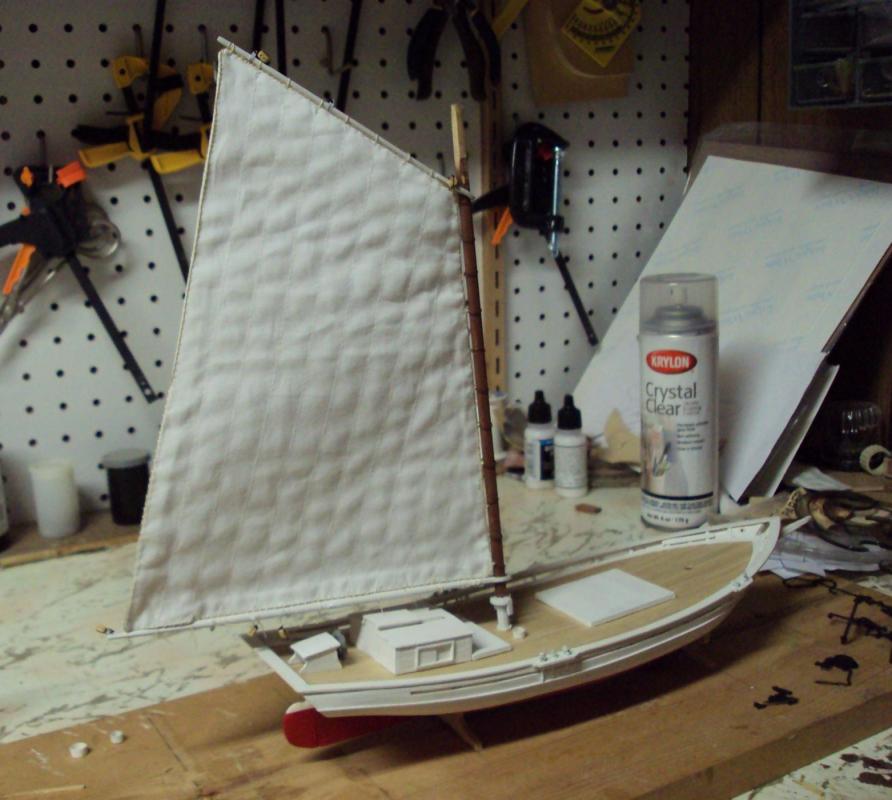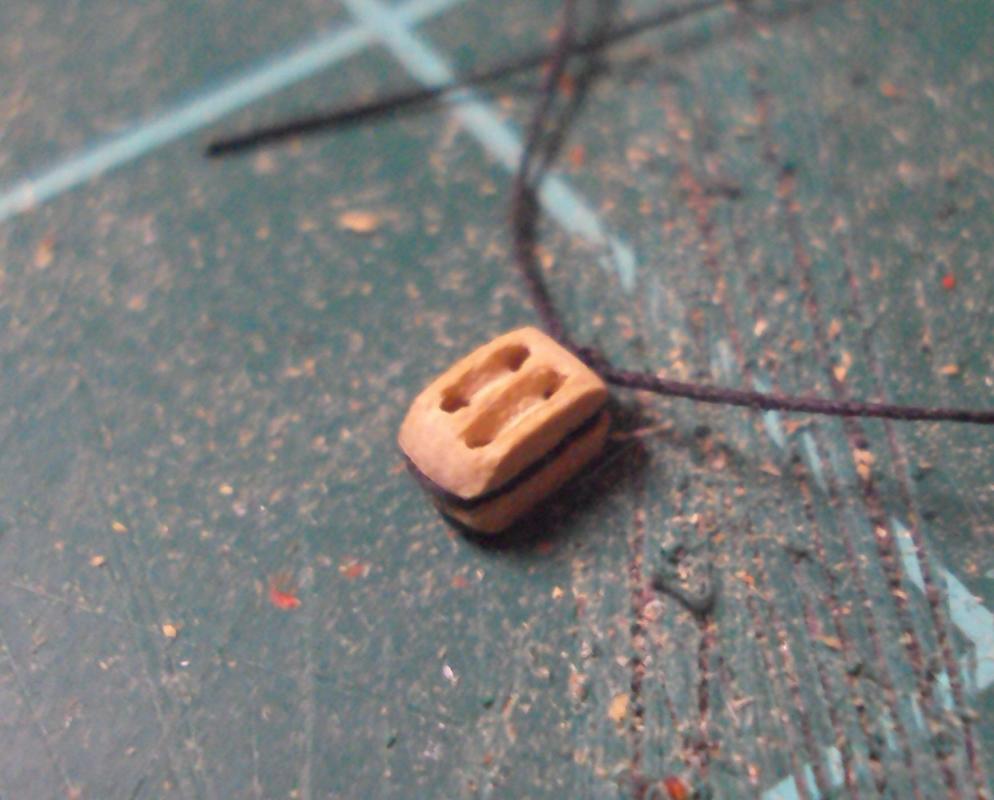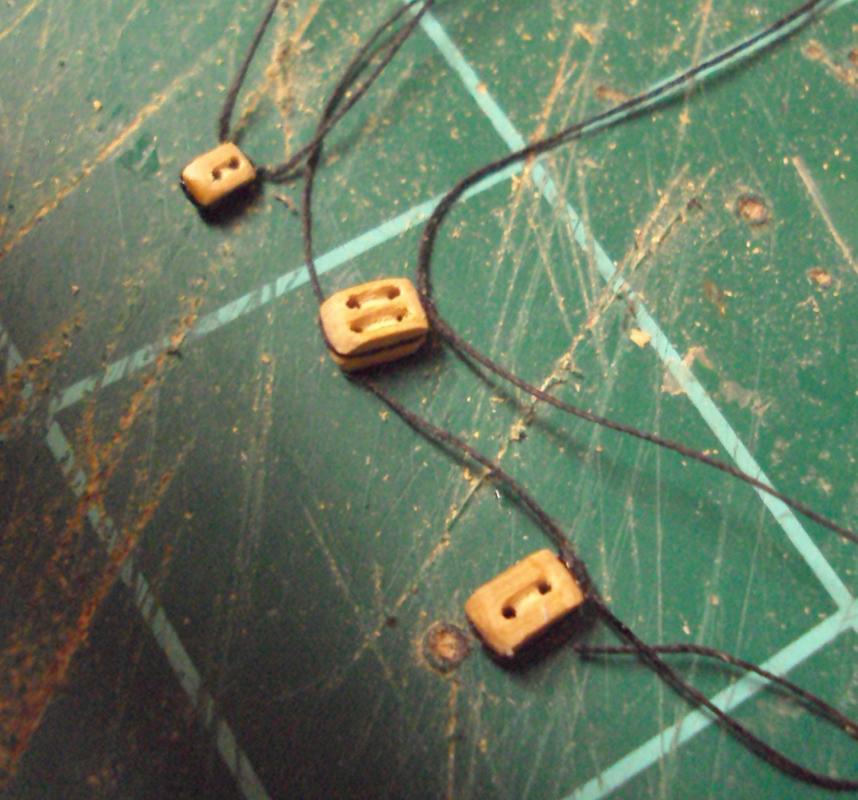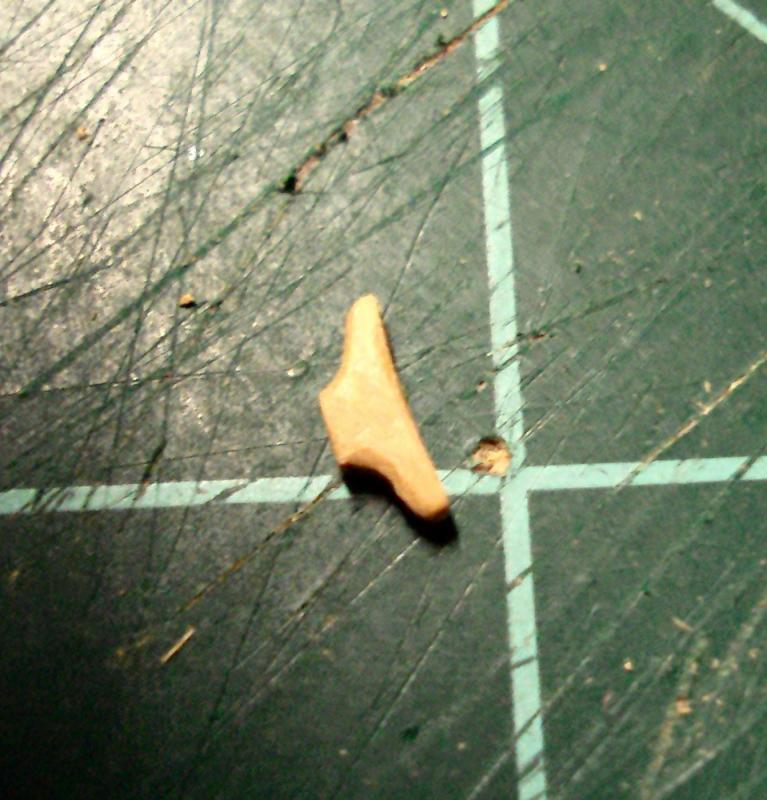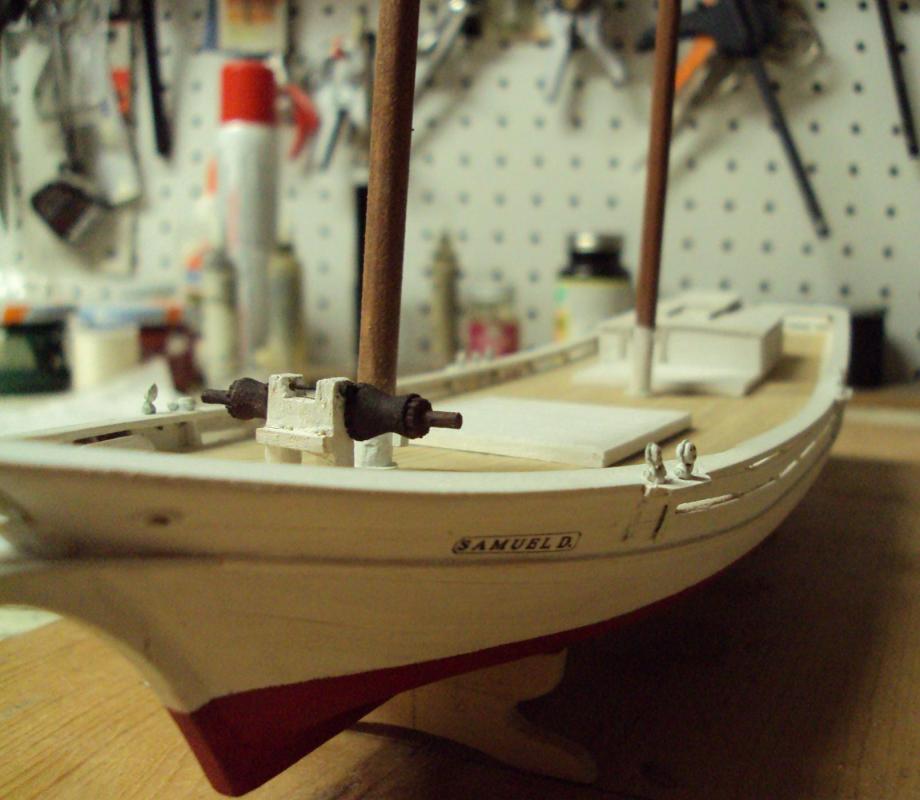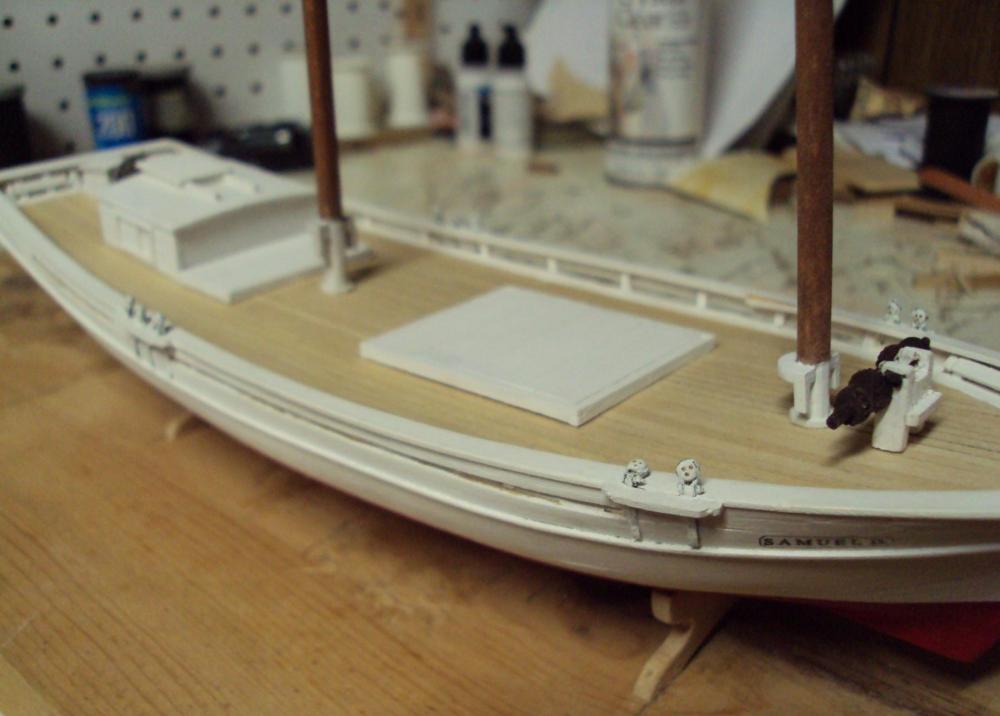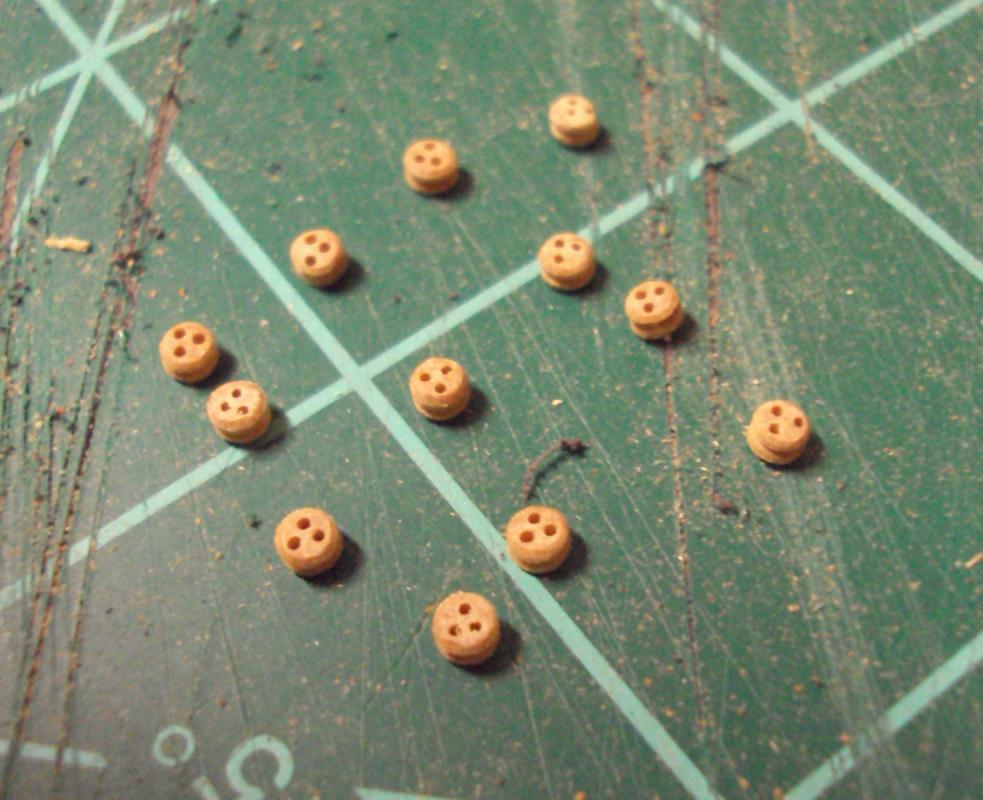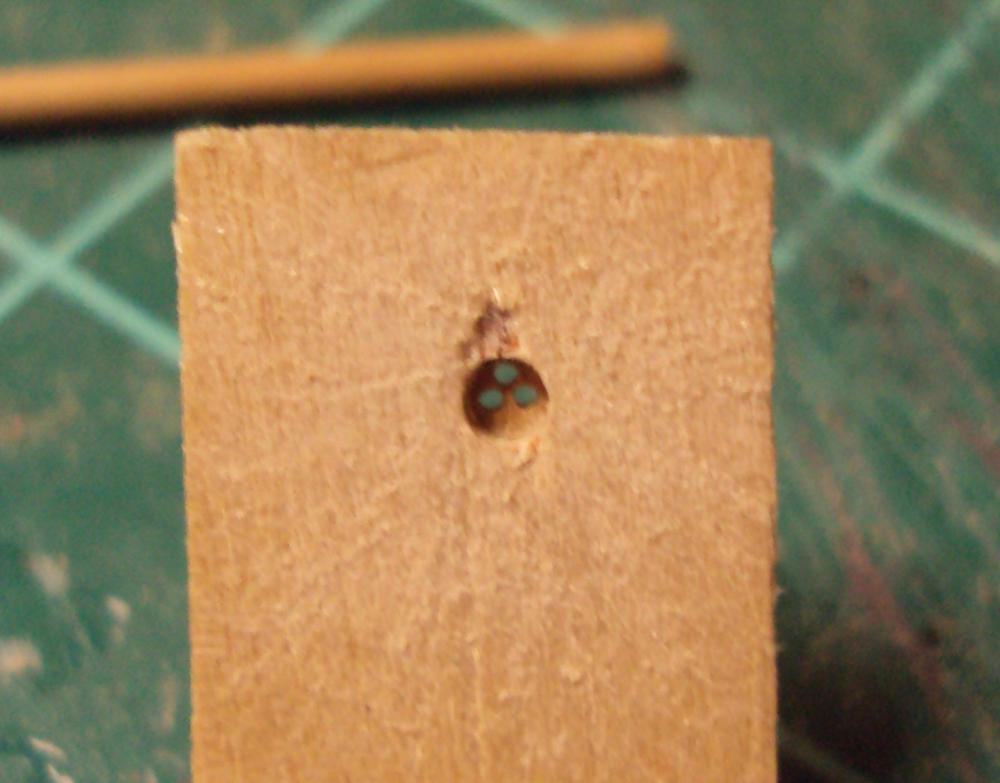
russ
Members-
Posts
3,086 -
Joined
-
Last visited
Content Type
Profiles
Forums
Gallery
Events
Everything posted by russ
-
Beautiful work so far. The hull has a very nice atmosphere about it. Well done. I would recommend a spacing jig for the deadeyes. That will help with alignment. Russ
- 481 replies
-
- rattlesnake
- model shipways
-
(and 1 more)
Tagged with:
-
She looks very good. Excellent work and congratulations. Russ
- 34 replies
-
- chesapeake bay flattie
- Midwest Products
-
(and 1 more)
Tagged with:
-
Here are a few blocks and a cleat. The blocks are rope stropped, although on the real boats, they were mostly internally metal stropped. At this scale, rope stropped will have to do. The double sheaved block is 5/32" long as is the larger single sheaved block. The smallest block is 1/8" long. The cleat is for the forward side of the foremast. Russ
-
Sam and Carl: My client is a very good friend and has told me not to rush anything. She understands without a doubt. If it were actually a brilliantly built model, I would be happy. Instead, it is what it is. There are aspects of the model I like, but there are also plenty of imperfections, things I wish I had done differently, etc. It is far from perfect and no where near brilliant. Fortunately for me, she is one who thinks it is great and does not dwell on the imperfections. Like any model, this has been a learning experience and I will take what I have learned and apply it to the models that will follow. Hopefully, they will be better because of this experience. Russ
-
Popeye: Thanks for the encouragement. John: I am almost ready to get the sails, gaffs, and booms onto the masts and then I can complete the mastheads and permanently mount the masts on the deck. It all has to happen in a certain order so it is slow going to stop, think, and check to make sure I do not get ahead of myself. Russ
-
I am still here and still at it. Summer finals are graded, grades are posted and so I have some time to do some more work. Here are the rest of the deadeyes for the shrouds. I needed 10 and made 12. Not a bad idea since they may be needed. I also include another photo of my deadeye jig. It is quite handy and easy to make. Russ
-
The rigging lines for a boat like this would have been small. Maybe a 1/2" diameter, but probably 3/8" diameter or so. Take .375 and divide by the scale denominator and see what size that is. That would probably be about right. Russ
- 34 replies
-
- chesapeake bay flattie
- Midwest Products
-
(and 1 more)
Tagged with:
-
Determining thread size by model scale
russ replied to David Goulden's topic in Masting, rigging and sails
David: Make sure the plan uses diameter and not circumference. Often times plans will give circumference while the rigging thread dealer will sell in diameter. Other than that consideration, your calculation is correct. Divide the full size diameter by 80 to get the scale diameter. I am not sure how many different thicknesses are called out on the plan, but you could easily use 4 or more different thicknesses covering the range and it would be fine. A lot depends on how much detail you are going to include in the restored model and how much money you are willing to spend to get that detail. If you have a choice between a larger diameter and a smaller diameter in a given instance, choose the slightly smaller thread. The overall scale effect will be better that way. Russ -
Excellent work. Everything looks very clean. The sprung decking is well executed. Congrats on a great model. Russ
- 86 replies
-
The 24 inch Cutty Sark by Revell was one of their "build a legend in a weekend" kits. Looking in my old Revell catalogue, they had a Constitution kit, Civil War Blockade Runner kit, and Mayflower kit in that line. The Cutty Sark was H-368 and listed at 24 inches long. They also had a 1/96 scale kit that was 36 inches long, H-399. This was a completely different kit than the smaller 24" version. . The length of the full sized ship is 288 ft so the 24 inch kit's scale is 1/144 scale. Russ
About us
Modelshipworld - Advancing Ship Modeling through Research
SSL Secured
Your security is important for us so this Website is SSL-Secured
NRG Mailing Address
Nautical Research Guild
237 South Lincoln Street
Westmont IL, 60559-1917
Model Ship World ® and the MSW logo are Registered Trademarks, and belong to the Nautical Research Guild (United States Patent and Trademark Office: No. 6,929,264 & No. 6,929,274, registered Dec. 20, 2022)
Helpful Links
About the NRG
If you enjoy building ship models that are historically accurate as well as beautiful, then The Nautical Research Guild (NRG) is just right for you.
The Guild is a non-profit educational organization whose mission is to “Advance Ship Modeling Through Research”. We provide support to our members in their efforts to raise the quality of their model ships.
The Nautical Research Guild has published our world-renowned quarterly magazine, The Nautical Research Journal, since 1955. The pages of the Journal are full of articles by accomplished ship modelers who show you how they create those exquisite details on their models, and by maritime historians who show you the correct details to build. The Journal is available in both print and digital editions. Go to the NRG web site (www.thenrg.org) to download a complimentary digital copy of the Journal. The NRG also publishes plan sets, books and compilations of back issues of the Journal and the former Ships in Scale and Model Ship Builder magazines.


